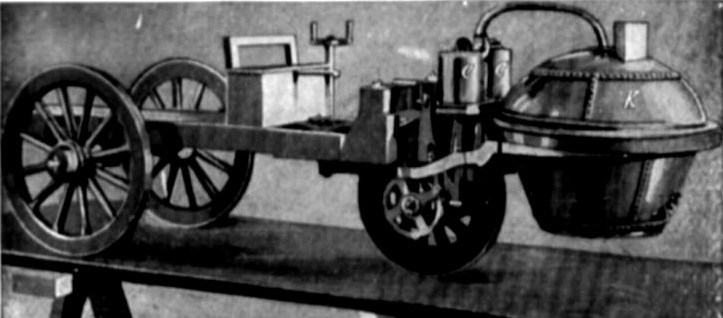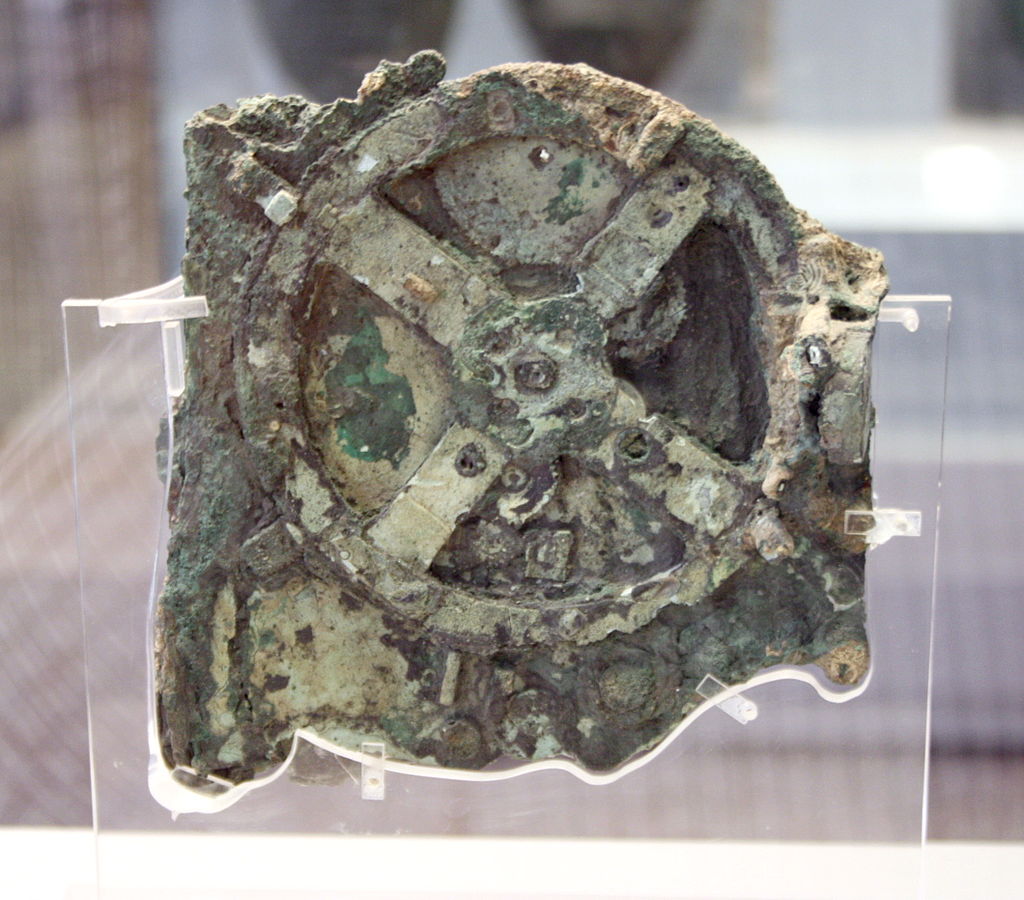5 Technologies That Are Way Older Than You Think
Today's technology didn't always exist in its current form. A lot of our favorite tools have been around for much longer than you may think.
Living in modern times gives us access to an unparalleled wealth of technology. Citizens of developed countries might turn on a robotic vacuum cleaner, drive to work, make a wireless phone call to distant parts of the world and check out the latest news on upcoming virtual-reality headsets on their computers. Just a century ago, all of this would have been impossible — wouldn't it?
Yes and no. While today's technology didn't exist in its precise form decades (or even centuries) ago, a lot of our favorite tools have been around for much longer than you might think. Many denizens of the modern world take these innovations for granted, but if you take a trip back in time, you'll see that these technologies had quite a long journey before reaching their recognizable forms.
MORE: Best Mac Antivirus Software 2014
Mobile phones
Why you can trust Tom's Guide

People think it was: 1973
It was really: 1918
Difference: 55 years
The first device that modern consumers would recognize as a cellphone debuted in 1973, and consumer models launched 10 years later. If you view a mobile phone as an autonomous device that can make or receive phone calls using a radio tower, and then jump to another tower while maintaining the call in progress, that's as far back as the technology goes. But if you think of a mobile phone as a way to make and receive wireless calls using a single radio tower, you'll have to dig a little deeper.
A mobile phone combines two distinct but related technologies: telephony and radiotelegraphy. Wireless radio technology debuted in 1901, but two-way communication didn't happen until 1906. Even then, communication was restricted to telegraph signals. It wasn't until 1918 that German engineers discovered a way to combine radios and telephones and installed a wireless telephone system on a military train between Berlin and the suburban town of Zossen. Since the system could be used while the train was on the move, it was the world's first truly mobile phone, and commercial service for train passengers followed in the 1920s.
After that, mobile phones were almost a foregone conclusion. (Indeed, futurists had been anticipating them since the early 1900s.) Walkie-talkies, which send signals directly to and from each other without a central node, came into widespread use during World War II. Car phones came into existence in 1946, but calls would drop when a car moved out of range of the originating radio tower. From there, militaries and telephone companies around the world refined the concept of handing off signals from one tower to another until the first "official" cellphone showed up in the '70s.
Automobiles

People think it was: 1886
It was really: 1769
Difference: 117 years
Every automobile buff knows the story of Karl Benz, the German engineer who designed the first internal-combustion engine and, subsequently, the first modern car. Automobiles slowly replaced horse-drawn carriages in most of Europe and the United States, and mass production took off with Henry Ford's expedited assembly lines in 1914. But self-powered vehicles predate Benz's invention by more than 100 years.
Internal combustion is not the only way to power a vehicle. The steam engine, which came about in 1712, gave engineers a new and efficient way to power machinery, and in 1769, inventor Nicolas-Joseph Cugnot applied the power source to human transportation. Cugnot invented a three-wheeled "steam dray," which used pistons and ratchets attached to a portable steam engine to propel it forward. Within two years, the French army used similar vehicles to transport heavy matériel, although the steam drays were unreliable and were eventually replaced by horses again.
Automobile innovation was hardly stagnant between Cugnot and Benz, however. Inventors in the United Kingdom developed steam carriages between 1784 and 1865, and steam wagons found their way into the American West in 1866. These vehicles were often enormous, as they were essentially steam locomotives that could run without a track. Film buffs can get a glance of one in action in the classic 1971 Western flick McCabe and Mrs. Miller.
Virtual reality

People think it was: 1968
It was really: 1517
Difference: 451 years
With the Oculus Rift and similar devices on the way, virtual reality may finally become an integral part of everyday gaming and media consumption.
In 1968, computer scientists Ivan Sutherland and Bob Sproull created the first head-mounted VR system. Known as the Sword of Damocles, this complex machine could display a computer-generated 3D wireframe room right in front of a viewer's eyes. Yet while the system was comprehensive, it was hardly the first time humans had created a simulation of another place.
Take, for example, Italian Renaissance painter Baldassare Peruzzi and his work on the Villa Farnesina in Rome. In 1517, Peruzzi completed one of the villa's most striking rooms: the Sala delle Prospettive (Hall of Perspectives). Even though the room was fully indoors, one glance at the walls tricks a viewer into thinking that he or she is looking out onto a great, pillared Roman forum.
While panoramic and illusory paintings date back to ancient Greece, this appears to be the first time they were ever combined so deftly. Although painting a room is not as high-tech as donning a headset, what is virtual reality if not a convincing attempt at making a viewer believe that he or she is in a totally different place?
Robots

People think it was: 1928
It was really: 1206
Difference: 722 years
Humans are fascinated with robots: Nothing makes us question what it means to be human quite as much as something that looks and acts like us, but cannot think or feel.
In terms of traditional robots, the first one, named Eric, appeared in 1928 at an engineering exhibition in London. (The word "robot" comes from a 1921 Czech play about artificial men used as slaves.) W.H. Richards, secretary of the Society of Model Engineers, designed the aluminum robot with a 12-volt motor, 11 electromagnets and 3 miles (5 kilometers) of wires. The robot could respond to remote-control or voice commands.
MORE: Best Headphones 2014
Perhaps Eric was the first conventional robot, but think about what a robot is: an artificial construct that, by design, performs a function usually reserved for humans. Consider, then, Turkish inventor al-Jazari, who created a number of automata, including a full four-piece band in 1206. By using a series of hydraulic water tanks, al-Jazari created four men who moved and played instruments, including a programmable drummer who could tap out different rhythms with a series of movable pegs.
In 1603, karakuri ningyō (mechanical puppets) gained popularity in Japan by performing simple tasks such as serving tea and firing arrows. Automata captivated audiences in the West in 1737 with Jacques de Vaucanson's "Digesting Duck." This mechanical creature could eat grain and "excrete" it from a different compartment. Some foundations for modern robotics also came from early guided missiles, which came into being around 1877.
Computers

People think it was: 1938
It was really: 150 B.C.
Difference: 2088 years
The computer is one of the marvels of the 20th century, giving us quick access to games, productivity software and a digital connection to the rest of the world. None of it would have been possible without German engineer Konrad Zuse's Z1 model. Zuse completed the Z1 in 1938, and although the device had its share of operational difficulties, users could punch pieces of tape and feed them into the machine as programmable Boolean variables — essentially an early form of binary code.
Assuming a computer has to be a programmable device (rather than a complex calculator, like an abacus), the history of the device stretches back well past the 1930s, to about 150 B.C. In 1900, Greek divers discovered an ancient contraption called the Antikythera mechanism, and scientists have been trying to unlock its secrets ever since.
The small, boxy machine contained at least 30 interdependent gears, which corresponded to the days and months of the Egyptian calendar, overlaid with the Greek zodiac, the sun and the known planets. By selecting a day and month, astronomers could turn a hand crank and discover how the planets would align across the zodiac on any given date in the past or the future. It's not exactly Titanfall, but for a device from the time of the Old Testament, it's not half bad.
Marshall Honorof is a Staff Writer for Tom's Guide. Contact him at mhonorof@tomsguide.com. Follow him @marshallhonorof and on Google+. Follow us @tomsguide, on Facebook and on Google+.
Get instant access to breaking news, the hottest reviews, great deals and helpful tips.

Marshall Honorof was a senior editor for Tom's Guide, overseeing the site's coverage of gaming hardware and software. He comes from a science writing background, having studied paleomammalogy, biological anthropology, and the history of science and technology. After hours, you can find him practicing taekwondo or doing deep dives on classic sci-fi.
